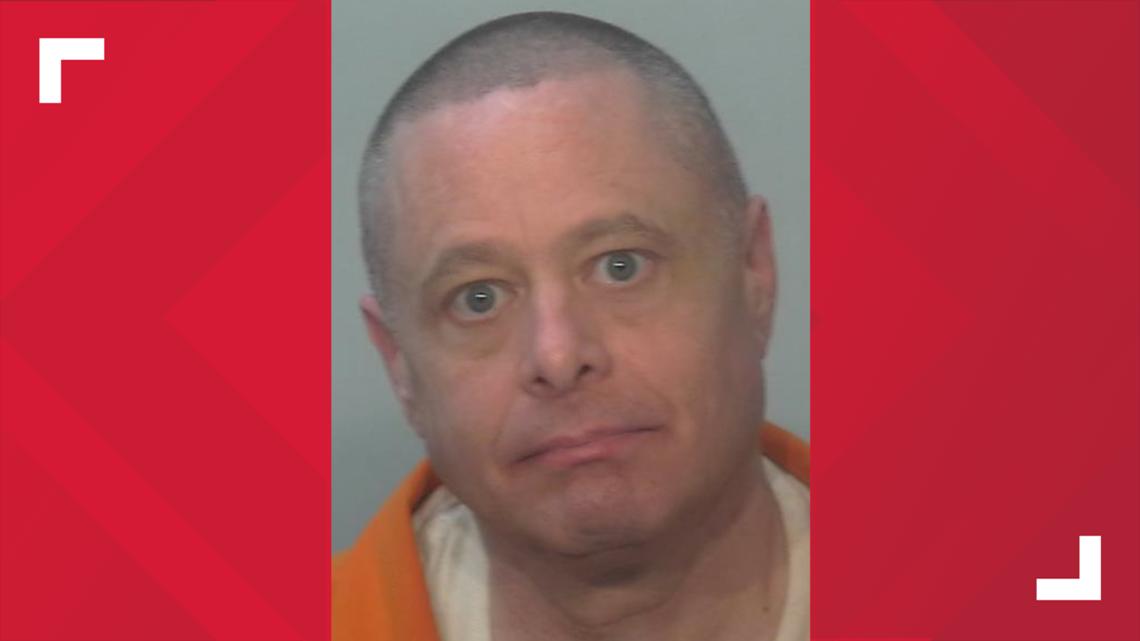Day 16. Court resumes and begins with a Motion in Limine from the P. This link will update throughout the day.
Day 16 in the trial of Delphi Murders suspect Richard Allen begins Tuesday at the Carroll County Courthouse in Delphi. Follow our live blog for the latest updates.

www.wishtv.com
Delphi Murders trial: Day 16 live blog
People stand in line outside the Carroll County courthouse waiting for the doors to open ahead of Day 16 in the Delphi Murders trial. (WISH Photo)
Presented By

by: Michaela Springer, Ashley Fowler and Jason Ronimous
Posted: Nov 5, 2024 / 08:04 AM EST / Updated: Nov 5, 2024 / 04:19 PM EST
INDIANAPOLIS (WISH) — Day 16 in the trial of Delphi Murders suspect Richard Allen begins Tuesday at the Carroll County Courthouse in Delphi.
Allen, 52, is charged with murder and murder while committing or attempting to commit kidnapping in the deaths of 13-year-old Abigail “Abby” Williams and 14-year-old Liberty “Libby” German. The girls’ bodies were found near the Monon High Bridge near Delphi on Feb. 14, 2017, a day after they went missing.
Allen was first investigated in 2017 and again in October 2022. After a second police interview, he was taken into custody.
The trial began Oct. 18 and was expected to continue through mid-November. Originally, 16 Allen County residents sat as the jury on the case, but one juror was dismissed on Oct. 25.
Cameras are not allowed in the courtroom.
Tune into News 8 and follow our daily live blogs throughout the trial for the latest developments.
NOTE: The times listed in the blog headers are the times which the entries were added. Specific times for courtroom events will be listed in the entries if available. These notes are compiled from photographs of written notes provided by reporters in courtroom and emailed to the WISH-TV news desk.
This video is no longer available
There was an issue with the media playback engine. The sub-error code will contain additional information about the underlying cause. | UNKNOWN encountered, code: 1000
For a brief summary of Day 15 in the Delphi Murders trial (Monday), scroll to the bottom of the page.
To view all of our previous trial coverage, click here, and follow News 8’s Kyla Russell on X as she covers the trial live from Delphi.
4:11 P.M.
Court is back in session at 1:47 p.m. The state says the next defense witness is a phone expert and they request that two previous witnesses who examined Libby’s phone be able to sit in the court room for rebuttal purposes.
The jury is back in the court room at 1:52 p.m. The defense calls Stacy Eldridge. Eldridge is an expert in computer information management. She worked for the FBI for nearly 10 years as a forensic examiner and later a senior examiner. She also worked as an instructor on digital evidence.
Eldridge says she left the FBI and is now a license private detective in Nebraska. She tells the jury she used to have a license in Cellbrite, the software used to forensically examine cell phones.
1:52 P.M. CONTINUED TESTIMONY OF ERIC WARREN
Court is back in session at 11:31 a.m. There have been delays in getting the pool notes from Delphi today.
Defense attorney Brad Rozzi is continuing his questioning of Eric Warren. He asks “do firearm manufacturers take into account the force of the slide?” Warren responds, “yes, it’s a blueprint characteristic.”
Rozzi asks, “Is there research on integrity of the slide over time?” Warrens responds, “not specifically.”
Rozzi asks, “how would you describe Sig Sauer’s quality?” Warren says “generally perceived as high quality, the slide should maintain its integrity over time.”
At 11:36 a.m. attorney for the prosecution James Luttrell begins his cross examination.
He asks Warren, “you have no written report in this case, why?” Warren says “it is not something that came up.”
Luttrell asks, “you would expect took marks to persist over years, even with heavy use?” Warren says yes.
Luttrell goes through class, sub-class and individual characteristics, focusing on sub-class being from the manufacturing process.
He asks Warren, “even sequential serial numbers may not share sub-class characteristics?” Warren says, “correct but it depends.”
Luttrell asks, “will a trained examiner always look for sub-class? Warren says yes.
Luttrell asks, “Did Oberg have any concern of sub-class on the extractor or chamber?” Warren says no.
Luttrell asks “Do you know how many years of experience Oberg had as a firearms and tool mark examiner? Are you suggesting to the jury that Oberg forgot about sub-class of the extractor or chamber?” Warren says, “I’m saying it is possible because there is no documentation. I make every effort to document to the best of my ability.”
Luttrell asks, “Oberg noted three different tools making strengthened results, right?” Warren responds, “no.”
Luttrell asks if Warren agrees on the chamber hood in the report?” Warren says, “some argument, which is not sufficient.”
Luttrell asks Warren, “the test fired cartridge in this case was suitable in Oberg’s conclusion?” Warren says “yes, that was her conclusion.”
Luttrell asks, “do you actively use CMS (firearm training methods)?” Wheeler responds, “yes. Only applicable to striated marks not in impressed marks.” He says he does not use in every case.
Luttrell asks “Were you trained to use another examiner’s photographs to testify about CMS in court?” Warren says yes.
Luttrell asks, “In 2021 did you indicate that you did not use CMS?” Warren says, “it might not have been applicable in that case, but I do not recall.”
Luttrell says that Warren’s lab is not accredited and asks, “what is the most important tool in your lab?” Warren says, “myself.”
Luttrell asks, “how valuable to you is your comparison microscope?” Warren says, “you need to use it if you’re making a comparison. Luttrell asks, “when asked by Rozzi if you received everything you needed, that didn’t include the cartridge or gun?” Warren says, “I received all documentation I needed.”
Pool reporter’s notes say at this point that Luttrell is “hammering into EW on why he didn’t request/physically examine cartridge and gun.”
At 12:15 p.m. Rozzi begins his re-direct.
Rozzi asks, “Did I ask you to write a report?” Waren says no. Rozzi asks, “did you make yourself available to the prosecution they wanted to depose you? Warren says, “yes, but it was a few weeks ago and I was in Morocco.
Questions from the jury for Eric Warren.
AT 12:24 P.M., THE JURY BEGAN THEIR QUESTIONS OF WARREN:
- How would CMS or objective testing be used when testing a firearm with a change in slide and racking angle? Warren says it would still need “significant agreement.”
- Would removing, cleaning, disassembling change individual characteristics of a firearm? Warren says, “no, only if there was some sort of damage.”
- Do you know if manufacturer keeps track of sub-class? Warren says, “no, they don’t.”
- Is there a reason you didn’t verify the results of Oberg’s test by doing your own test? Warren says, “my role here was to educate attorneys on what documentation was and see if it supported the concession.”
- Would doing your own analysis have been more conclusive? Warren says, “hard to say.”
- Is CMS criteria the gold standard? Pool notes do not indicate an answer.
- Are you a certified firearm and tool mark examiner? Warren says yes.
- Would individual markings be different depending on who cycles? Warren says, “documentation of Oberg does not support conclusion.”
- Did you look at the sub-class marks of the cartridge? Pool notes do not show an answer.
- What is the relevance of cartridges having similar sub-class characteristics? Warren says, “Depends on if it is from manufacturing or cycling.”
- Are sequential serial numbers made in the same lot? Warren says, “generally accepted that close serial numbers have parts made at similar times, but may be in different lots.”
- Are you aware that Oberg’s conclusion was unfired by another expert? Warren says yes.
- Are you aware Allen’s gun’s ejector was recessed and had similar markings to markings made on the cartridge? Warren says that is common in many guns like it.
- Is it normal practice to not issue a report when consulting? Warren says yes.
- Wha are the chances that the cartridge at the scene matches the test bullets? Warren says, “higher likelihood of guns just in Indiana.”
The court is in recess and breaks for lunch at 12:42 p.m.
1:52 P.M.
Court is back in session at 11:31 a.m. There have been delays in getting the pool notes from Delphi today.
Defense attorney Brad Rozzi is continuing his questioning of Eric Warren. He asks “do firearm manufacturers take into account the force of the slide?” Warren responds, “yes, it’s a blueprint characteristic.”
Rozzi asks, “Is there research on integrity of the slide over time?” Warrens responds, “not specifically.”
Rozzi asks, “how would you describe Sig Sauer’s quality?” Warren says “generally perceived as high quality, the slide should maintain its integrity over time.”
Prosecution attorney Jame Luttrell asks Warren, “the test fired cartridge in this case was suitable in Oberg’s conclusion?” Warren says “yes, that was her concession.”
Luttrell asks, “do you actively use CMS (firearm training methods)?” Wheeler responds, “yes. Only applicable to striated marks not in impressed marks.” He says he does not use in every case.
Luttrell asks “Were you trained to use another examiner’s photographs to testify about CMS in court?” Warren says yes.
Luttrell asks, “In 2021 did you indicate that you did not use CMS?” Warren says, “it might not have been applicable in that case, but I do not recall.”
11:33 A.M.
Janice Allen, Richard Allen’s mother, arrived in the courtroom around She has been gone while recovering from a fall coming into the courthouse last week.
Richard Allen entered a few minutes later in a turquoise button-down shirt.
Court began at 9 a.m. The state filed a motion in limine requesting Dr. Grassian’s testimony not be considered, presuming guilty or innocence of Richard Allen, or opinions/legal conclusions of Richard Allen.
Defense said it had reservations about the timeline of their request, saying that a witness already can’t testify to guilty or innocence, but can disagree without other testimony. Allen’s legal team argues that this coujld, in this case, “handcuff” Allen.
In response, prosecutors said that they filed the motion because Westcott made a comparison to Allen’s innocence in her testimony Monday.
Allen’s legal team argued that the motion’s request is too broad and asked for something that “doesn’t exist at this point.”
Gull said that, as long as the doctor has been told not to testify inappropriately, they should not have to worry about this. The judge added that if their witness “crosses the line,” then they will be having a different discussion.
Defense then called
Betsey Blair, a witness who told police she saw “Bridge Guy”
Blair said the prosecution did not ask her what car she was driving on Feb. 13, 2017, earlier in the trial.
She testified that she went to the trails near the Monon High Bridge on Feb. 13, 2017, and then left after a while. She returned to the trails at 1:45 p.m. and left for good at 2:15 p.m.
Blair told the court she left Mears entrance and turned left. She saw wone car in the CPS lot. It had been backed into a parking spot and its front was pointing toward the county road. She said the car was not a bright color like red or yellow.
Defense attorney Andrew Baldwin asked Blair if it was not a black car. She said she didn’t recall.
Baldwin handed Blair a statement she made on April 2, 2019. In the statement, she says the car could not have been black.
Blair said she only saw the side of the car and couldn’t tell if it was a hatchback, adding that she even drew the profile of the car for police.
The jury was then shown a defense exhibit — Blair’s drawing of the car.
The defense ended its questioning and cross-examination began at 9:30 a.m.
Blair told the prosecution that she told police on Feb. 13, 2017, about the car that she saw in the CPS lot.
Prosecutor Stacey Diener said she told Blair that a similar vehicle had been seen around the same time, parked off the road and asked Blair if that changed her recollection. Blair said that she felt certain about the car she saw.
When cross-examination ended, the jury asked Blair two questions.
- Q1: Is it possible the car at CPS belonged to someone inside?
- A: The building was abandoned.
- Q2: Do you know if anyone checked to see if the car belonged to an employee?
- A: I don’t know.
Next on the stand was
Dr. Stuart Grassian. Grassian is Harvard-educated and has been on faculty at the Harvard University School of Medicine for 25 years.
Dr. Grassian told the court he has a special interest in what solitary confinement does to someone’s mental health and that he has evaluated “several hundred people” in those conditions.
Grassian said that the defense reached out to him about whether solitary confinement played a role in the incriminating statements Allen was making in prison.
The doctor was given videos, reviewed Westcott’s report, Wala’s notes, and several other records. He said he also listened to audio of Allen’s phone calls from Westville Correctional Unit.
All information was from Nov. 2022 to the spring of 2023. Grassian also said he was given info on Allen’s behavior inside Wabash Valley Correctional Facility up to February 2024. At this point, the prosecution asked for a sidebar.
After the sidebar, defense attorney Bradley Rozzi asked Grassian about solitary confinement in a clinical/professional cell.
Grassian said that when a person is confined to a small cell, there’s limited availability for mental stimulus. He told the court it’s “toxic for a mental state” and people cannot function: “In the worst cases, people can become psychotic.”
The doctor said that Allen’s cell “totally” met those requirements.
Diener objected and said she needed more info on the sources the doctor is pulling from.
Grassian responded, “The United Nations considers anything more than 15 days in solitary confinement ‘torture.’”
Diener objected, saying that doesn’t apply to the Indiana Department of Correction. The judge sustained.
Grassian told the jury that solitary confinement can cause behaviors including “smearing feces” and “acting out sexually” and that there is a high rate of suicide.
Wehn Rozzi asked about “delirium,” Grassian described it as “a fog with everything floating by, nothing makes sense” that can be caused by internal factors (sepsis, heart failure) or external factors.
Grassian said Allen “absolutely” displayed symptoms of delirium in his phone calls from jail.
Grassian testified that false memory is a “big component” in Allen’s evaluation. He said false memory begins looking like memory over time. It’s like a game of telephone in your brain and starts with “I think I saw.”
He told the court that Richard Allen’s case looked like false memory.
Direct questioning ended and cross-examination began. Grassian said a real memory is “extremely perceptual” when compared to a fake memory. He added that it was “always about the conditions” when it came to solitary confinement and protective custody.
Diener ended, and after a quick mention about conditions by Rozzi, the jury asked questions.
- Q1: Do you believe psychotic behavior can go back to normal after being removed from solitary confinemet?
- A: Yes.
- Q2: Do you believe a completely normal person can become psychotic after being in solitary confinement for more than 6 months to a year?
- A: Yes, I have seen it happen.
Grassian left the stand, and the defense called
Dr. Eric Warren. Warren lives near Memphis, has a doctorate in biochemistry, and owns SEP Forensic Consultants, which helps with toolmark identification and crime scene reconstruction.
He previously worked for the state of Tennessee as a special agent in firearms, but left the job to pursue more toolmark work. Warren said his industry has a “critical community” with professionals, and said community work can be helpful because it’s like peer review.
Warren told the jury he was asked by Rozzi to review conclusions made by
Melissa Oberg, a former firearms analyst who examined the bullet found by Libby and Abby’s bodies and Richard Allen’s gun.
He explained the process of reviewing Oberg’s reports, including her deposition and photographs of the cartridge. He then explained what class, subclass, and individual characteristics are when they come to bullets.
Class is general, like the make of a car, Warren said. Subclass is in between, larger than individual. Individual would be fine details, like “hair scratches.” He mentioned that labs have been shutdown over subclass and individual characteristics.
Warren said he was shown a 5-minute video of Richard Allen’s Sig Sauer, but couldn’t find anything significant in the video. He then explained the difference between cycling and firing a bullet, and said firing a bullet would make stronger marks. According to Warren, it isn’t appropriate to compare a fired cartridge to a cycled cartridge. “Apples to apples” is what Warren said he would expect, not “apples to oranges.”
Warren confirmed to the jury that Oberg used a fired round to compare the cycled round to, which he said wasn’t right as it isn’t repeatable and reproducible.
James Luttrell began his cross examination, asking if Warren only looking at the report and photos and not physical evidence would impact his ability to draw conclusions. But Warren disagreed.
He said Oberg didn’t examine the actual extractor in the gun to determine if there were potential subclass characteristics.
Rozzi then showed Warren a picture of triangular marks on the cartridge, which are ejector marks. He says those were “hallmark of subclass characteristics.”
Luttrell objected to Rozzi mentioning a lab that had been shut down over subclass characteristics, but Gull sustained. The two went back and forth on if “most” labs use CMS, which is an objective identification process.
Warren said some labs do not, but he wouldn’t classify it as “most,” but said he would have said there was an insufficient agreement in the cartridges.
Court recessed for a short break at 11:10 a.m.
11:33 A.M.
Judge Gull has ruled to allow testimony from defense expert Stuart Grassian during court on Tuesday.
Earlier in the day, the state motioned to prevent Grassian’s testimony from being told to the jury.
The jury also heard from a tool mark expert in court Tuesday morning.
This information is breaking and will be updated shortly.
9:06 A.M.: STATE MOTIONS TO PREVENT TESTIMONY
Around 9:06 a.m., state prosecutors filed a motion to limine against defense expert Stuart Grassian.
Grassian was expected to testify about the effects of solitary confinement on an inmate, but the prosecution’s motion is an attempt to limit or prevent evidence, or in this case, a testimony, from the jury.
It wasn’t clear how Judge Gull would rule on the motion.
9 A.M.: COURT RESUMES FOR TUESDAY
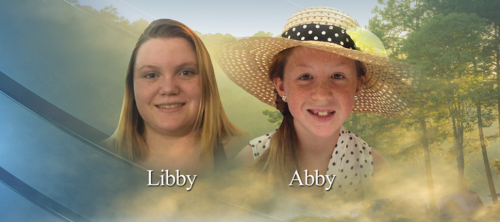
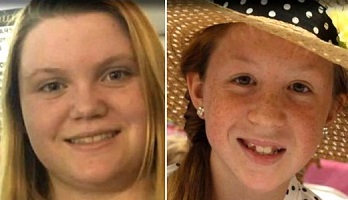
 en.wikipedia.org
en.wikipedia.org
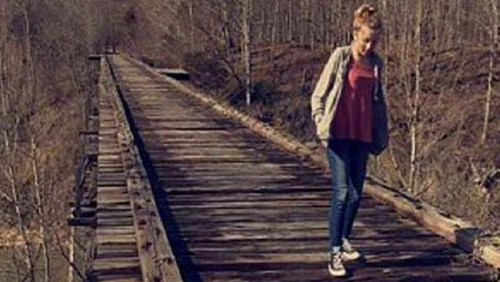
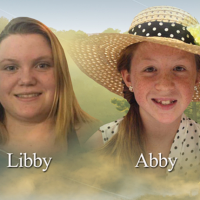
 www.crimewatchers.net
www.crimewatchers.net




 www.crimewatchers.net
www.crimewatchers.net

